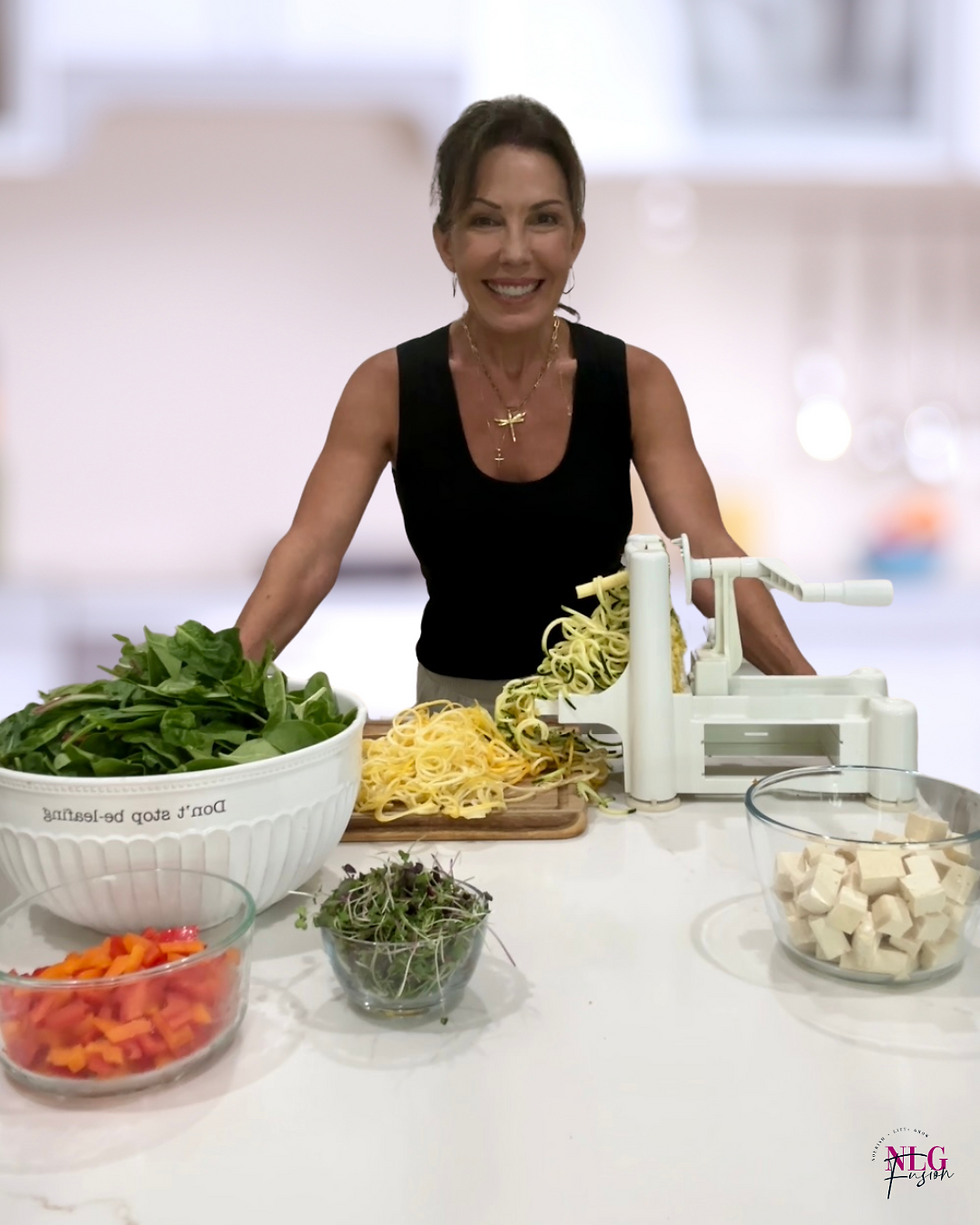Fiber 101: Why It’s Essential for Your Health and How to Increase Your Intake
- Nancy Leeds Gribble
- Mar 26
- 4 min read

Fiber:The Nutrient You’re Probably Not Getting Enough Of
Let’s have a heart-to-heart, shall we?
You’re an active, vibrant woman over 50, crushing it in life, staying plant-based, working on fat loss, longevity, and thriving through menopause—but something feels a little off.
Maybe your digestion is a little sluggish, your energy isn’t as steady, or (let’s be real) your weight isn’t budging like it used to.
💡 Spoiler alert: You might not be getting enough fiber—even on a vegan diet!
Yep. Plant-based doesn’t automatically mean fiber-rich (the definition has become so broad that it no longer means whole foods for many people). It all comes down to what's actually on what’s on your plate. And fiber? It’s the secret weapon you didn’t even know you needed—for gut health, metabolism, hormone balance, and overall vitality.
Today I'm covering:
✅ What fiber actually is
✅ The two types of fiber and why you need both
✅ Why women over 50 need more fiber than they think
✅ How fiber helps with menopause, fat loss, and longevity
✅ How to get enough fiber without bloating or digestive drama
✅ The plant-based fiber supplement I swear by
So grab a big glass of water and let’s talk about the most underrated nutrient in your diet.
What is Fiber (and Why Should You Care)?
Fiber is the indigestible part of plant foods—but don’t let that fool you. Just because your body doesn’t absorb it doesn’t mean it’s not critical for your health.
Think of fiber as the cleanup crew for your digestive system. It sweeps away waste, balances blood sugar, fuels gut bacteria, and helps you stay fuller longer.
And here’s where it gets even more interesting—there are two kinds of fiber, and both play different roles:
1️⃣ Soluble Fiber (The Gel-Maker)
Dissolves in water and forms a gel-like substance in your gut.
✔ Slows digestion = steady blood sugar (bye, cravings!)
✔ Lowers cholesterol = happy heart health
✔ Found in: Oats, lentils, nuts, chia seeds apples, beans,
2️⃣ Insoluble Fiber (The Broom)
Doesn’t dissolve—just keeps things moving through your system.
✔ Adds bulk = prevents constipation (hello, happy gut!)
✔ Supports gut bacteria = stronger immune system
✔ Found in: Whole grains, cauliflower, dark leafy greens, broccoli, ground flaxseeds
You need both and most people (yes, even plant-based eaters) aren’t getting enough.
Why Women Over 50 Need More Fiber
Once you hit 50, things change. Your body goes:
"Hey, remember all those years we kept things running smoothly? Well… we’re switching things up now!"
🎢 Hormones fluctuate
🩸 Blood sugar gets unpredictable
🔥 Fat doesn’t burn as easily
🛑 Digestion slows down
And this is exactly why fiber is a non-negotiable.
💡 Here’s how fiber supports YOU at this stage of life:
✅ Menopause & Blood Sugar -Hormonal changes make insulin resistance more likely—meaning blood sugar spikes = fat storage.
👉 Solution? Soluble fiber slows digestion and prevents sugar crashes.
✅ Fat Loss & Metabolism- Fiber keeps you full longer, so you’re not constantly reaching for snacks.👉 It has been said that for every 10g of fiber you eat, you naturally consume 100 fewer calories!
✅ Longevity & Gut Health - Your gut thrives on fiber—and a healthy gut means better digestion, immunity, and even mood regulation.
👉 Fact: High-fiber diets reduce the risk of disease and increase lifespan.
✅ Heart Health & Cholesterol -Fiber literally binds to cholesterol and sweeps it out of your body before it sticks to your arteries.
👉 Heart disease is the #1 killer of women, and fiber can help prevent it.
But Wait… How Can You Be Vegan and STILL Low on Fiber?
🌱 Refined plant foods (white bread, pasta, crackers, faux meats) have little to NO fiber.
🌱 Blending smoothies breaks down fiber’s structure, making it less effective.
🌱 Relying only on vegan protein sources like tofu? Great for protein, not for fiber.
👉 Moral of the story? Not all "plant-based" foods are fiber-rich—and if you’re not intentional, you can fall short.
How to Get More Fiber (Without Bloating or Digestive Drama)
1️⃣ Start Slow (Your Gut Will Thank You)
Going from zero to 50g of fiber overnight = bloat city.
👉 Increase gradually so your gut bacteria can adjust.
2️⃣ Eat the Right High-Fiber Foods
Here’s your vegan, menopause-friendly fiber dream team:
✔ Chia seeds (10g per tbsp!) – Add to oats or smoothies
✔ Flaxseeds – Perfect in baking or sprinkled on yogurt
✔ Lentils & Chickpeas – Hello, fiber and protein
✔ Berries – Antioxidant-rich and gut-loving
✔ Dark leafy greens – Spinach, kale, swiss chard
✔ Whole grains – Quinoa, farro, oats
✔ Cruciferous veggies – Broccoli, cauliflower, Brussels sprouts
✔ Nuts & Seeds – Almonds, walnuts, hemp seeds
3️⃣ Hydrate, Hydrate, Hydrate
Fiber needs water to do its job—otherwise, it can cause constipation.
4️⃣ Consider a Clean Fiber Supplement
Even with the best diet, some days you just won’t hit your fiber goals—and that’s where a high-quality supplement helps.
👉 My go-to? Purium Fiber Blend
✔ 100% plant-based ✔ Gentle on digestion (no bloating!)✔ Easy to mix into smoothies or water
If you want effortless fiber support, this is it.
Final Thoughts: Fiber is Your Superpower for Fat Loss, Longevity & Hormone Balance
Here’s the deal: Fiber is the easiest, most underrated way to level up your health.
It supports digestion, metabolism, menopause, gut health, fat loss, and even longevity.
So let’s make a deal—start slowly, eat a variety of fiber-rich foods, stay hydrated, and when needed, supplement smartly. The goal: aim for a minimum of 25grams a day!
💬 What’s your favorite go-to high-fiber food? Drop it in the comments!
Xo,
~Nancy




My favorite high fiber food is raspberries.